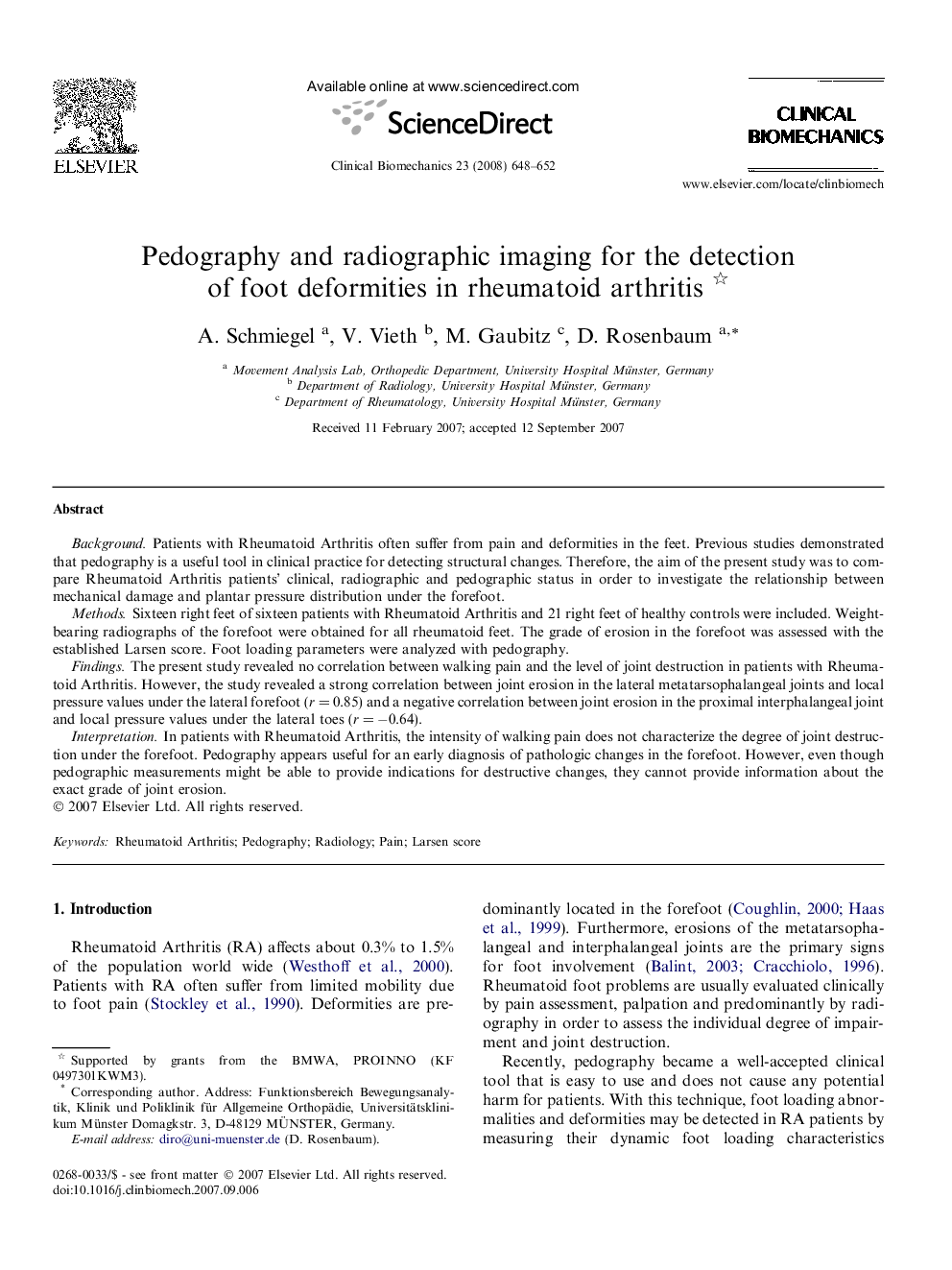| Article ID | Journal | Published Year | Pages | File Type |
|---|---|---|---|---|
| 4051474 | Clinical Biomechanics | 2008 | 5 Pages |
BackgroundPatients with Rheumatoid Arthritis often suffer from pain and deformities in the feet. Previous studies demonstrated that pedography is a useful tool in clinical practice for detecting structural changes. Therefore, the aim of the present study was to compare Rheumatoid Arthritis patients’ clinical, radiographic and pedographic status in order to investigate the relationship between mechanical damage and plantar pressure distribution under the forefoot.MethodsSixteen right feet of sixteen patients with Rheumatoid Arthritis and 21 right feet of healthy controls were included. Weight-bearing radiographs of the forefoot were obtained for all rheumatoid feet. The grade of erosion in the forefoot was assessed with the established Larsen score. Foot loading parameters were analyzed with pedography.FindingsThe present study revealed no correlation between walking pain and the level of joint destruction in patients with Rheumatoid Arthritis. However, the study revealed a strong correlation between joint erosion in the lateral metatarsophalangeal joints and local pressure values under the lateral forefoot (r = 0.85) and a negative correlation between joint erosion in the proximal interphalangeal joint and local pressure values under the lateral toes (r = −0.64).InterpretationIn patients with Rheumatoid Arthritis, the intensity of walking pain does not characterize the degree of joint destruction under the forefoot. Pedography appears useful for an early diagnosis of pathologic changes in the forefoot. However, even though pedographic measurements might be able to provide indications for destructive changes, they cannot provide information about the exact grade of joint erosion.
